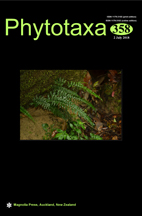Abstract
Portulaca is the only genus in Portulacaceae and includes ca. 100 species with worldwide distribution. Inflorescence types in Portulaca have been used as an important character in infrageneric classifications and it has been suggested that capitula and solitary flowers derive from a cyme. The present paper focuses on the study of the diversification patterns of the inflorescence within Portulacaceae based on a phylogenetic approach. A phylogenetic framework was used to estimate the ancestral inflorescence type under parsimony and maximum likelihood criteria. The results, although ambiguous, suggest that a cymose inflorescence may have been the ancestral type for Cactineae. Diversification patterns within Portulacaceae are not clear, but it is plausible that capitula and solitary flowers are derived from a cymose inflorescence. In addition, the first two types may have evolved independently at least twice in the group. These results show that the inflorescence type has limited systematic utility, contrary to the current accepted infrageneric classifications of Portulaca, and only characterizes a group of Australian species with cymose inflorescences.

